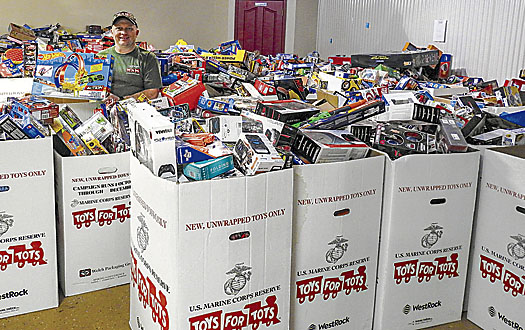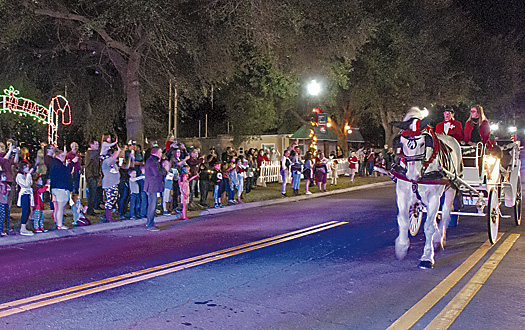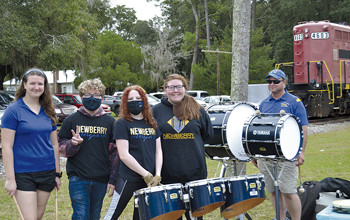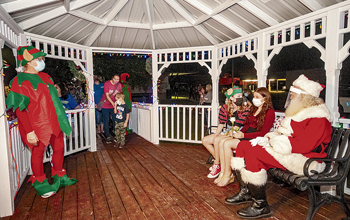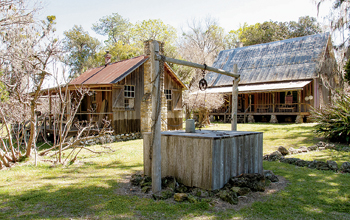Toys for Tots, Making Special Deliveries for Christmas
ALACHUA ‒ Toys for Tots is a program familiar to many, but its beginnings may not be as well known. Toys for Tors is run by the United States Marine Corps Reserve. The program began in 1947 and was so successful in its inaugural year, that in 1948 Toys for Tots was launched as a national campaign. The program continued to grow nationally with Marine reservists, often in their dress blue uniforms. In order to make the program more efficient, the Marine Toys for Tots Foundation was created in 1991.
During October, November and December of each year, the Toys for Tots program collects new, unwrapped toys and distributes those toys as Christmas gifts to needy children in the community. However, in 2020 with the pandemic, economic downturn and high unemployment, there is unprecedented need for the program.
“Because of the economic situation we have seen a 20 percent increase in requests for toys this year, and we have also seen a decrease in drop off of gifts in stores, especially the bigger chains. People are staying home due to pandemic, which has also led to more people doing online shopping instead of going to stores.” said Dennis Wait, Toys for Tots director of the Alachua and Tri County area.
“We have also seen an increase in individuals giving gifts and more people volunteering. We even had two young sisters, London and Layla Walker, ages seven and eight, raise $650 to buy toys for the annual drive,” Wait said. “We usually give out 20,000 toys to more than 3,000 kids throughout Alachua, Gilchrist, Dixie and Levy counties and we are still short of that mark at present, but next week is usually our biggest week so we are hoping the donations will rise.”
Wait served 20 years in the Marines, retiring as a major. He first became involved with Toys for Tots in Salt Lake City, Utah while still on active duty and pursuing a college degree in Sociology and Education. Upon retiring from the Marines, he became a teacher, relocating to the Gainesville area. He now teaches junior ROTC at Gainesville High School, during the day and from October to December spends much of his free time directing the local Toys for Tots program.
“We operate 100 percent on donations, service partners, and volunteers, all of which are comprised of local residents, businesses, and other organizations from within our community. But we also require help from the local community itself. We thrive solely on donations of toys, services and monetary gifts.
“Toys for Tots is a top-rated charity with over 97 percent of your monetary donations going to our mission of providing toys, books, and other gifts to less fortunate children,” Wait explained.
Monetary donations can be made online at the Toys for Tots local website: https://newberry-fl.toysfortots.org . The website also provides a list of local drop off sites for toy donations, a link to volunteer and the application for families to apply for assistance. Any toy donations should be new toys in the original package but unwrapped. Marine reservists and volunteers go to each drop off point to collect the toys.
For families in need of assistance for their children at Christmas, the website has an application form for them to fill out. “We have them apply so we can verify their address and need. We want to make sure that the toys go to kids that otherwise might not have a Christmas present,” Wait said. “Once we approve the application, the family is notified and can come to the new Alachua County Fairgrounds on Northwest 53rd Avenue near the Humane Society for pick up on Dec. 19 and 20.”
Wait says that each child will get a primary gift, three smaller gifts and stocking stuffers. For families, there are board games or sports equipment to help create family interaction as well as presents for the kids.
For those that would like to donate a toy or funds to help make a child's Christmas better, all drop off points listed on the website will continue to collect toys until the Dec. 18 deadline.
“It’s all about bringing joy and happiness to kids and helping families share the holiday together,” Wait said.
# # #
Email rcarson@
alachuatoday.com
Add a comment

